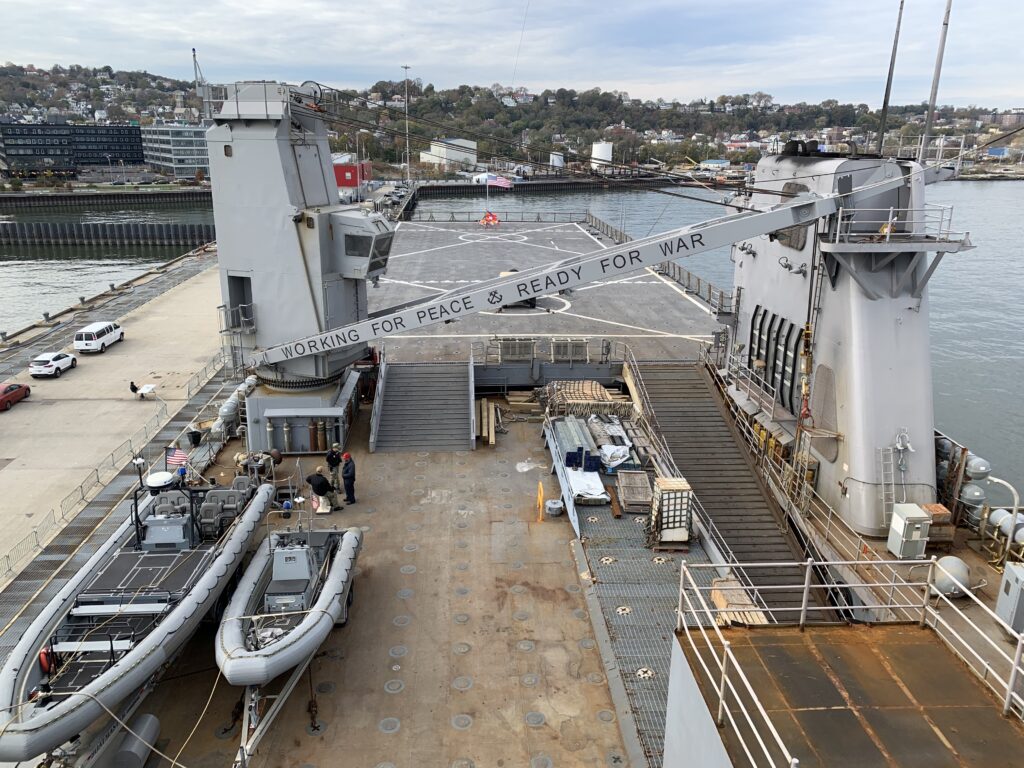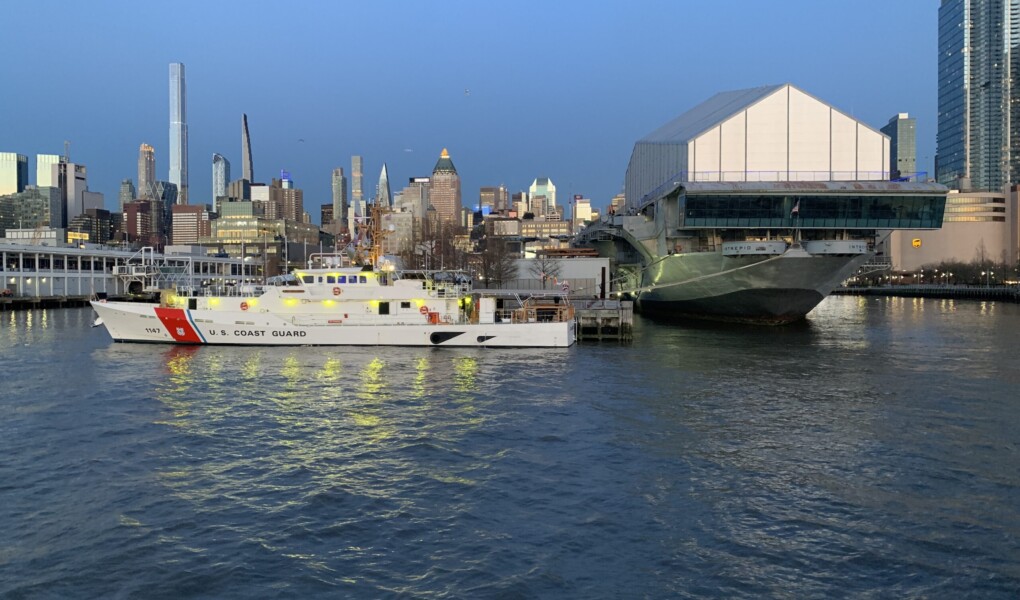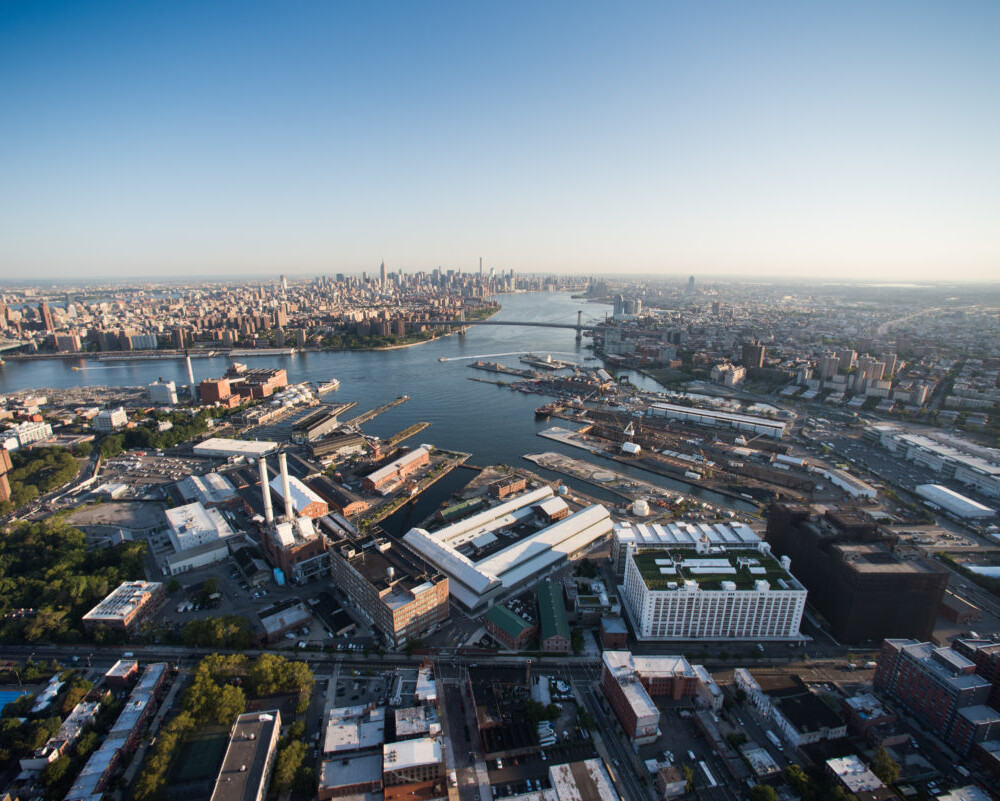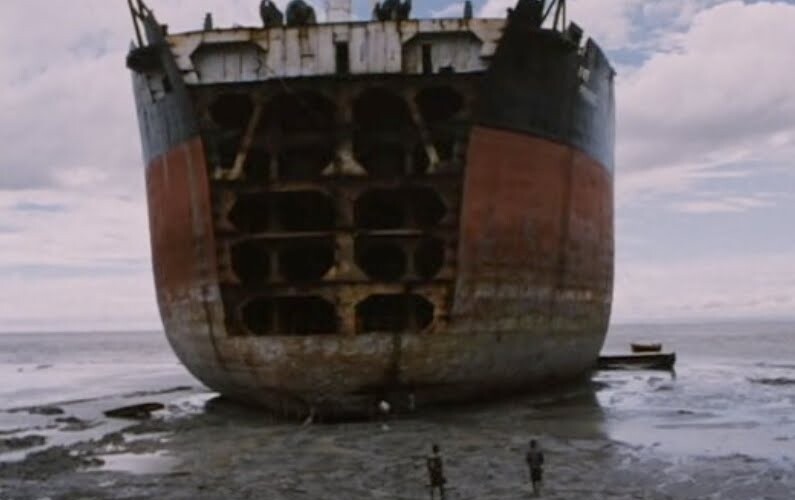Fleet Week came early this year, as last week the city was visited by USS Cooperstown, which became the first US Navy ship commissioned in New York City since USS New York received that honor in 2009. Named for not just the village of Cooperstown, NY, the ship also honors the 70+ members of the Baseball Hall of Fame that served in the military. The commissioning was attended by baseball greats Joe Torre and Johnny Bench, as well as lesser-known figures, like New York Gov. Kathy Hochul and Secretary of the Navy Carlos del Toro.
Cooperstown has left town, but next week we will have a new crop of vessels visiting us, some repeat visitors from recent Fleet Weeks, and some exciting new additions. Below is our annual guide to some of the units that will be in town—be sure to check out full schedule of events. The ships will be open to the public starting Thursday, May 25 through Saturday, May 27, and on Memorial Day, 8am–5pm. If you can’t make out to all of these spots during the week, join us on May 24, 26, and 29 for our Fleet Week Harbor Tours with Classic Harbor Line, where we will cruise past all the docking locations, get a waterside view of the ships aboard a beautiful motor yacht, and discuss the rich naval history of the harbor. On our Memorial Day cruise, we will also be doing a live stream of the tour.
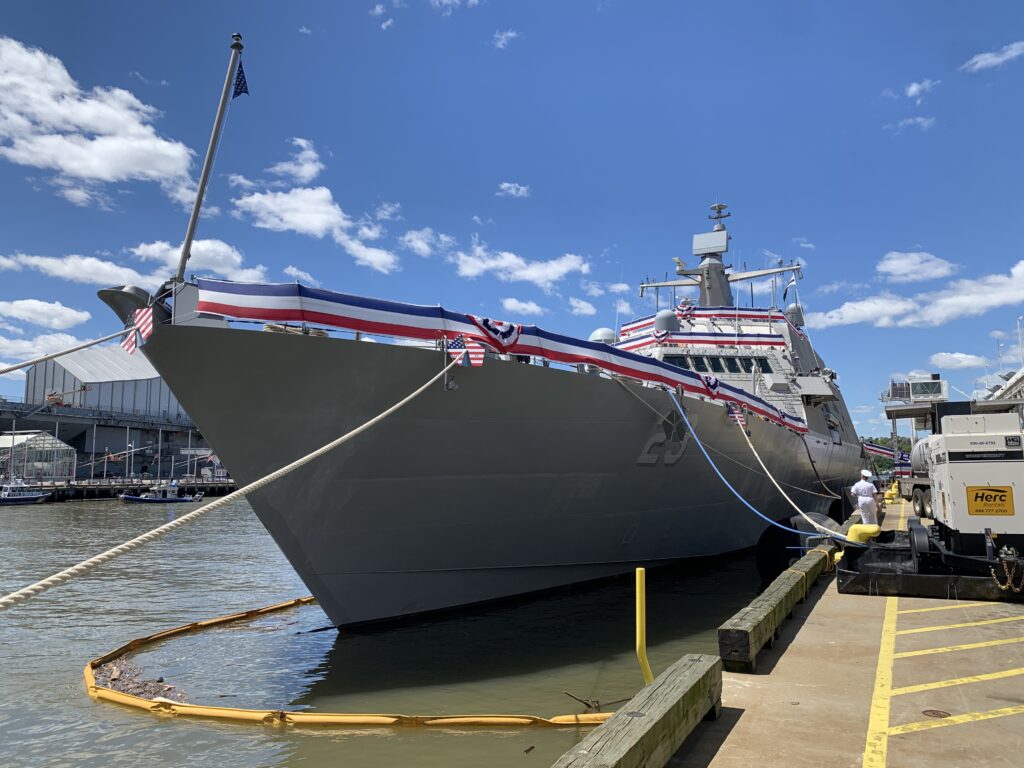
Manhattan Pier 88
- Ships open for visitors May 25–27, May 29, 8am–5pm
Fleet Week will again feature a large amphibious ship; last year it was USS Bataan (LHD-5), this year it will be USS Wasp (LHD-1), the lead ship of the class. This will be Wasp‘s first time back to New York since 2012. Known as a “big deck amphib,” Wasp resembles an aircraft carrier, but all of its aircraft are vertical take-off, including helicopters, as well as MV-22 Osprey tilt-rotors, legacy AV-8 Harrier II’s, and F-35B Lightning II’s. There will not be any F-35’s on board for Fleet Week, but Wasp did play a critical role as a test bed for the vertical take-off “B” variant developed for the Marine Corps and other operators of smaller flight decks across the US and allied navies. Wasp was the first ship to recover and launch an F-35B at sea, and it was also the ship where the Navy discovered that the airplane’s exhaust was melting the flight deck. All of the amphibious assault ships have since had their decks treated with a thermal coating to solve this problem.
Three allied navies will be represented at Fleet Week this year, with the Royal Navy’s entry parked at Pier 88, HMS Scott (H131). This is not a combat ship, but it still plays a vital role as Britain’s only naval oceanographic survey ship. Equipped with advanced sonar, it creates maps of the ocean floor for navigation, defense, and scientific research. Last year we were visited by HMS Protector, a polar ice patrol ship that supports British research in the Antarctic and South Atlantic; before the Royal Navy began operating that ship in 2011, Scott filled that role. Commissioned in 1997, the ship is nearing the end of its career. Its replacement is a pair of Multi-Role Ocean Surveillance (MROS) vessels, which are modified Offshore Support Vessels (OSV) used in the oil and gas industry; the first, RFA Proteus, was acquired in January, and it should enter service later this year after undergoing naval conversion. It is being specially designed to monitor and protect underwater infrastructure, like communications cables and pipelines, in the wake of the sabotage of the Nord Stream pipeline in September 2022. If you’re interested in HMS Scott, it is currently for sale.
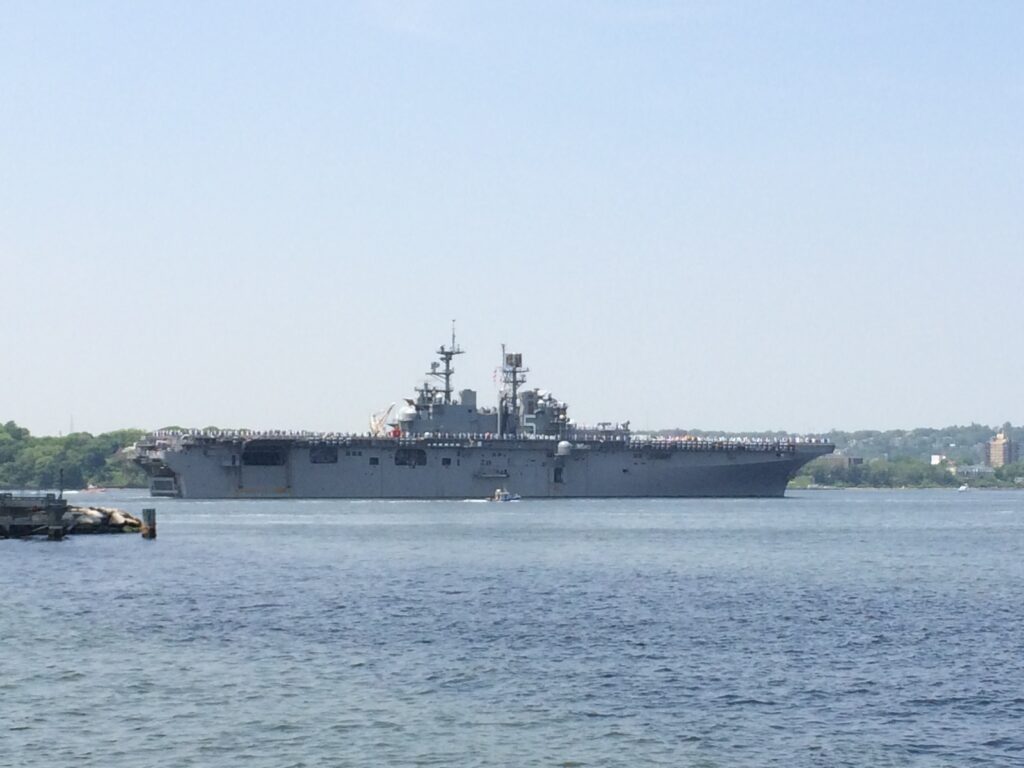
Manhattan Pier 90
- Ships open for visitors May 25–27, May 29, 8am–5pm
Go one pier north to visit more allied vessels, as Canada’s HMCS Glace Bay (MM 701) and Italy’s ITS Virginio Fasan (F 591) will be docked there. In 2019, I wrote about Glace Bay and other ships of the Kingston class of offshore patrol vessels, “We may not be seeing any more of these aging workhorses. The Canadian government is replacing the class with the new Harry DeWolf ships, the first of which will begin service in 2020.” Since then, the new ships have been delayed, and with only two currently in service, and only six planned, when they do enter service they will not be able to fully replace the 12 Kingstons and their role. So for now at least, Glace Bay will continue to patrol Canadian waters for another decade or so.
While Glace Bay represents the Royal Canadian Navy’s past, Virginio Fasan represents the US Navy’s future. This Italian warship is of the Fregata Europea Multi-Missione (FREMM), or European Multi-Mission Frigate design. Created in a joint Franco-Italian venture, Italy’s version is the Bergamini class, built by Fincantieri, while France operates the Aquitaine-class ships, built by Naval Group. Egypt and Morocco have also purchased variants built in Europe, but the most significant development in the FREMM program was the decision by the US Navy in 2020 to select the design for its next generation frigate, the Constellation class. Fincantieri owns Marinette Marine Shipyard in Marinette, Wisconsin, which was awarded the contract for the first ship in the class. The 20 planned US frigates will be slightly larger than their European counterparts, measuring 7,300 tons and 496 feet, but they will differ in far more significant ways. The impetus for ordering these new ships was the abject failure of the Littoral Combat Ship program (of which Cooperstown is a member), which delivered under-gunned and unreliable ships that were expensive and totally unsuited for peer-to-peer naval engagements. So the Constellations will be more heavily armed, boasting 32 vertical launch system (VLS) cells for missiles, versus the European ships’ 16, and LCS’ zero.
Intrepid Sea, Air & Space Museum
- Ships open for visitors May 25–27, May 29, 8am–5pm. Museum admission is not required to visit the ships
Four of the Naval Academy’s Yard Patrol Boats will be joining this year’s festivities, as they do every year. These 119-foot vessels are used to teach midshipmen basic seamanship skills. Alongside them will be USCGC Warren Deyampert (WPC-1151), the newest Sentinel-class Fast Response Cutter. The Coast Guard has also turned to a proven European design, as these cutters are based on the Dutch firm Damen’s Stan 4207 and 4708 models, which are operated by 14 different countries. All of the Sentinels are built by Bollinger Shipyards in Louisiana, and Warren Deyampert, commissioned just six weeks ago, is the 51st of 65 planned ships in the class. Another of the type, USCGC Lawrence O. Lawson, took part in Fleet Week 2019, and USCGC Clarence Sutphin, Jr. was commissioned in New York City at this very pier in April 2022, and I had the honor of serving on its commissioning committee. These are great ships with long careers ahead of them.
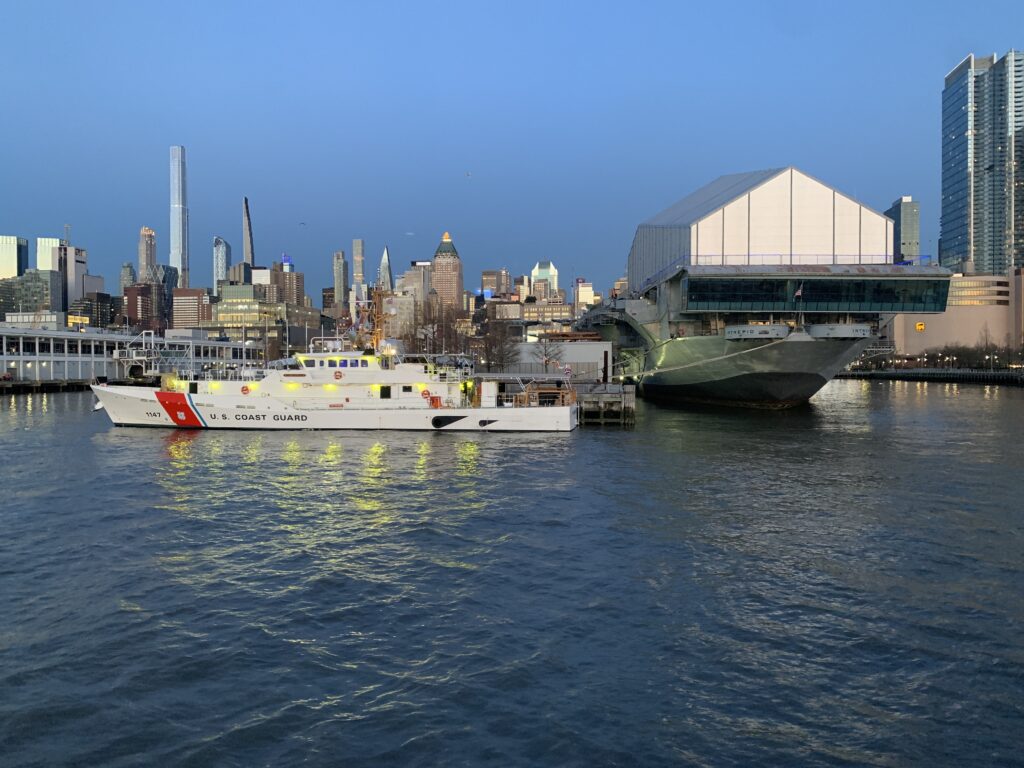
Staten Island Homeport
- Ships open for visitors May 25–27, May 29, 8am–5pm
USNS Newport (T-EFP-12) is a unique visitor to Fleet Week; Spearhead-class Expeditionary Fast Transports have participated many times before, but they have always visited SUNY Maritime Academy and have not been accessible to the public. These aluminum-hulled catamarans are owned by the Navy, but their “USNS” designation means that they are part of the Military Sealift Command, and therefore they are operated by mostly civilian crews; thus the reason why they have been showcased to potential future crew members at SUNY. Built by Austal USA in Mobile, Alabama, these ships were designed to move a variety of different cargoes, including troops, vehicles, aircraft, and humanitarian supplies, into shallow waters and austere ports, and to do it quickly—they can cruise at a whopping 43 knots. Next to Newport in Staten Island will be USS Oak Hill (LSD-51), a dock landing ship, and another member of the “Gator Navy,” like USS Wasp. Designed to carry Marines and deliver them to land, these Harpers Ferry-class ships have smaller flight decks, but they do have a large well deck for launching boats and landing craft, cranes for managing cargo, and accommodations for over 500 Marines. This ship last visited in 2014, but its sister ship, USS Carter Hall, made a port call to Staten Island in November 2019. Also at Staten Island will be USCGC Legare (WMEC-912), a medium endurance cutter homeported in Portsmouth, VA.
